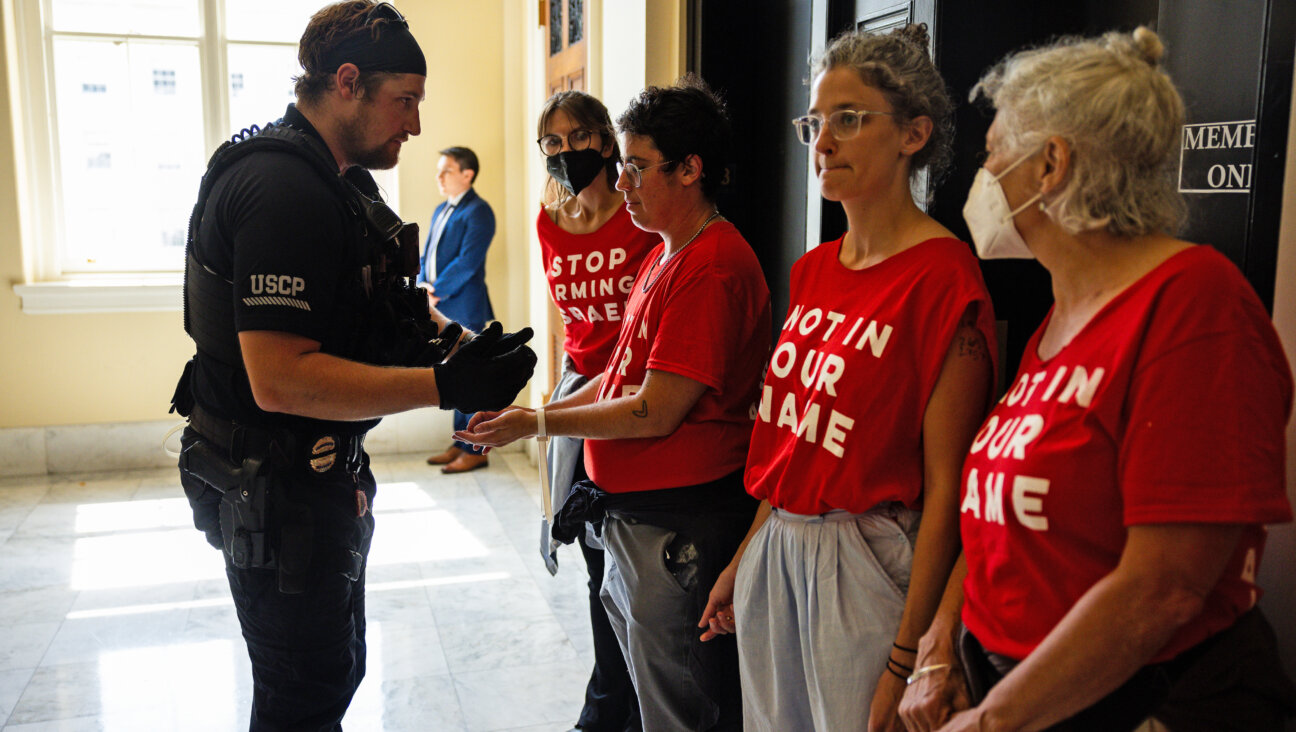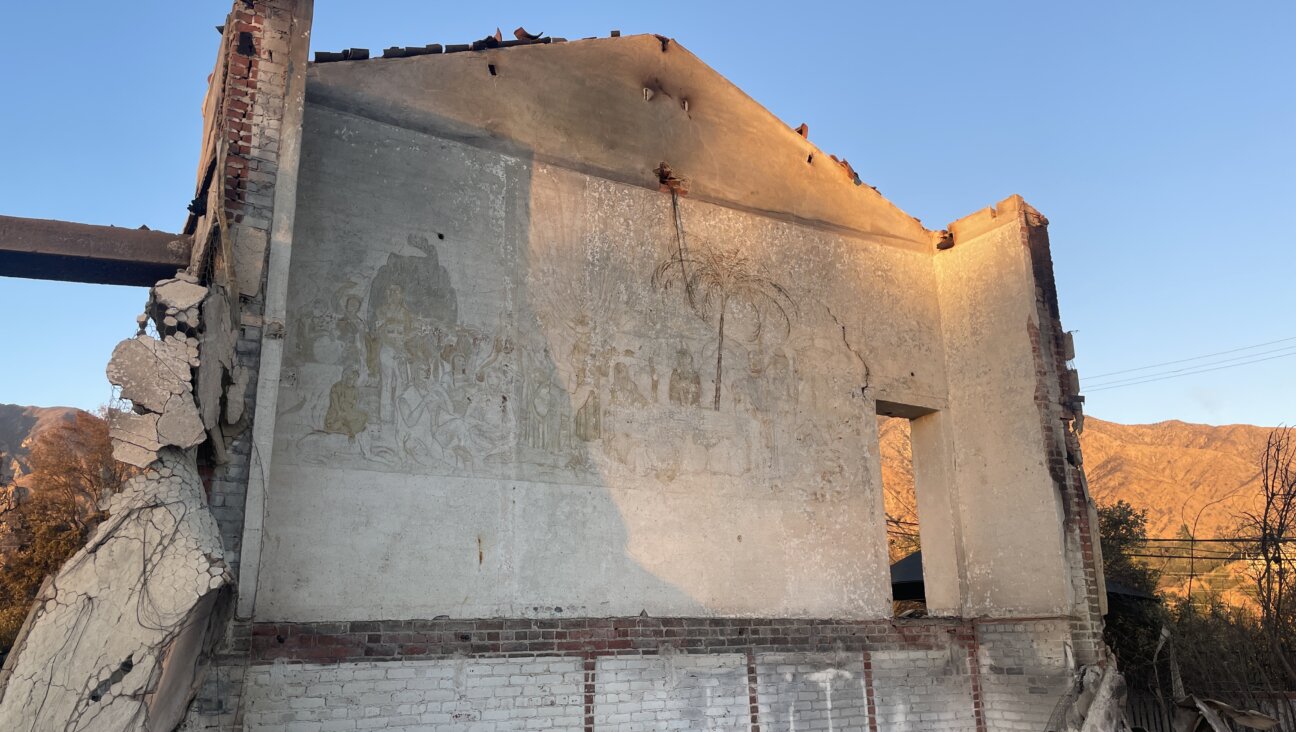The Joys of Sukkot
Sukkot gets a raw deal. So many marketing opportunities left on the table! You got your plagues masks for Passover, your chocolate gelt and cloying ceramic ballerina menorahs for Hanukkah, your hamantaschen for Purim. But where are the adorable sukkah dollhouses with Velcro branches and hanging fruit? Where’s the make-your-own-garlands craft kit? Why isn’t every Jewish kid given his own plush lulav rattle and scented etrog?
Major missed opportunity, people! Sukkot is one of the funnest holidays for kids. It’s like camping. You help build (or at least visit) a temporary house, like a sudden desert mirage popping up in a strange place. You string popcorn and cranberries, feeling self-important in your “Top Design” decorator role. You revel in the wild, mysterious jungle vibe of the woodsy branch-strewn, star-revealing roof. Your artwork is given pride of place on the walls. You get to eat outside, in your poncho or new fall jacket.
There’s something out of bounds and transgressive-feeling about this holiday, which is endlessly enticing for kids. I remember the day my dad first set up our new sukkah with heavy wood walls and told us we could draw on them. Even though I had permission, I stood hesitating with the marker in my hand, millimeters from that blank canvas. Could I really unleash my inner graffiti artist? (When I was 5 and felt the urge to deface the enticing surfaces of our home, I carved my brother’s name in the wooden armoire. No dummy, I.) Sukkot activities are illicit, but not.
It’s really a junior version of Burning Man, the festival in the Nevada desert my husband has attended every year for the last decade. Tens of thousands of people gather for what the organizers call “an exercise in temporary community.” They camp, wear crazy costumes, build vast and elaborate art installations, erect an entire 40,000-member city for a week, then dismantle it, leaving (one hopes) no trace. They burn a 40-foot wooden effigy of a man, representing whatever the participants want it to represent. There’s no commerce allowed — no restaurants, gas stations, hardware stores. You bring in and pack out what you need. You’re not even supposed to wear T-shirts with corporate or advertising imagery on them.
Burning Man is infantile (there’s a lot of me-so-naughty-naughty sexual acting out, and the drugs flow like a mighty stream, if streams were made of tabs of acid) but it’s also sophisticated. The elements are… well, elemental, with blinding dust storms and wild arcs of temperature change. You have to be able to take care of yourself; you have to be prepared. Human bodies are fragile; there are injuries every year, sometimes deaths. But the veterans are ready to help the newbies. It really is a community. So much preparation and work goes into this one week. And Jonathan finds it endlessly fulfilling. He roams the desert in a blue fur vest and sarong, cooking giant briskets for his tribe of a dozen or so campmates, getting covered in alkali dust. I let him go every year because I am the nicest wife ever.
It’s not surprising that Jonathan also loves Sukkot. He uses his Burning Man-honed skills to build our sukkah out of PVC pipe (it stores a lot smaller than the wooden slabs of my childhood), stretching the vinyl sheeting walls tight, rolling out the sisal roof. (If you know an affordable source for fresh schach in the city, lemme know.) Josie, my Daddy’s girl, loves to help. I think she understands there’s a kind of release of pent-up energy when a holiday this fun comes just five days after one that’s so grim and adult, Yom Kippur. And when you’re a kid, having your very own clubhouse is the coolest thing in the world. We recently read “Sammy Spider’s First Sukkot” (Kar Ben, 2004), which we hadn’t read since last year. (Being younger than 6 is like having Alzheimer’s. A story you last heard a year ago is brand new!) Josie’s immediate response: “I have to get to work on my art for the sukkah right away!” I was thrilled. Should I get out the construction paper and glue sticks to make garlands? Did she want to construct a model sukkah out of graham crackers? She looked at me like I was a moron. “I need to make the signs that say who can come in and who has to keep out!” Ah, in the inclusive tradition of our people.
In our family, we go with the harvest explanation for Sukkot, not the wandering-in-the-desert explanation, despite my husband’s own affinity for wandering in the desert. (As the product of an Orthodox-run day school, I’m still struggling with narrative. It took me a long time to distinguish historical truth from Torah truth and midrash truth. I grew up to major in folklore and mythology in college, and I now understand that there’s truth in every single story we tell. But when I explain to my 5- and 2-year-olds why we do what we do, I try to distinguish between storytelling truth and historical truth. And hey, that was a long parenthetical.)
We tell the kids our sukkah represents the fragile, small, temporary huts our ancestors built at the edges of their fields during harvest time in the land of Israel long ago. This was a period of uncertainty: Would the weather be good? Would the fruits and vegetables and grains sustain the people through leaner times ahead? Sukkot is really our people’s Thanksgiving. We appreciate the bounty we have; we accept our relative lack of control. We thank God for whatever we gather that sustains us — bread, friendship, community, blue fur. As Josie says, “You get what you get and you don’t get upset.”
That’s true of parenting as well, of course. We raise our kids with love and limits, dump some fertilizer on them, hope they grow into kind, independent, loving adults. We have to love them if they decide to become cheesemongers instead of corporate lawyers. One of my favorite parenting writers, Catherine Newman, who does a column called Dalai Mama on Wondertime.com, once wrote about her difficulty accepting her son’s serene but often solitary nature. “I bit my tongue every day in the car to stop myself from grilling him in that weirdly oblique parent way — you know the way: ‘Who’d you play with on the playground? By yourself? Really?’ followed by the marshmallow-phony, ‘That sounds fun!’ Like some kind of anxious anthropologist, I studied him — noted other kids running around in rough-and-tumble packs while Ben shimmied himself up a tree and surveyed the scene with his sweet and placid face.” We parents all need to appreciate our kids as they are, not as we wish them to be.
And to go back to the story truth of this holiday: We wandered in the desert until we were given the Torah, our laws, our halacha. Halacha literally means path, and there are so many paths — to enlightenment, to harvest, to adulthood. You can climb a tree and survey the scene, or you can run around in a pack. You can lead or follow, take the long way or the short way. You can camp in an RV with the air conditioning blasting, or you can sleep under the desert sky. You can’t control how other people — including your children — experience the world. There are different paths to enlightenment, and we all build different huts along the way. Write to Marjorie at [email protected].
A message from our Publisher & CEO Rachel Fishman Feddersen

I hope you appreciated this article. Before you go, I’d like to ask you to please support the Forward’s award-winning, nonprofit journalism so that we can be prepared for whatever news 2025 brings.
At a time when other newsrooms are closing or cutting back, the Forward has removed its paywall and invested additional resources to report on the ground from Israel and around the U.S. on the impact of the war, rising antisemitism and polarized discourse.
Readers like you make it all possible. Support our work by becoming a Forward Member and connect with our journalism and your community.
— Rachel Fishman Feddersen, Publisher and CEO






















